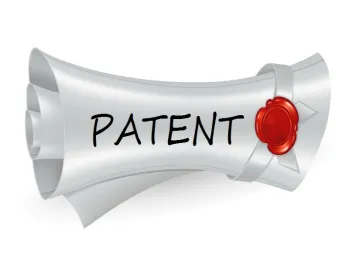On April 24, 2018, the Supreme Court issued its opinion in SAS Institute Inc. v. Iancu, No. 16-969, holding that when the U. S. Patent and Trademark Office (PTO) institutes an inter partes review (IPR), it must decide the patentability of all of the claims challenged in the IPR petition. The Court had granted certiorari on the following issue: whether 35 U.S.C. § 318(a) requires that when the PTO institutes IPR is it required to issue a final written decision addressing all of the challenged claims or may it limit the final written decision to only some of the claims. This decision issued the same day as the Court’s landmark ruling in Oil States upholding the constitutionality of IPRs and suggests that the high court will continue to weigh in on the adjudication of IPR proceedings.
Majority Opinion
In a 5-4 decision, with Justice Gorsuch writing for the majority, the Court held that the PTO “cannot curate the claims at issue but must decide them all.” Slip Op. at 1. After providing an overview of the IPR process, the Court found that the issue came down to the proper interpretation of 35 U.S.C. § 318(a). Id. at 4.
The Court found that “the plain text of §318(a) supplies a ready answer.” Id. at 4. § 318(a) states that “[i]f an inter partes review is instituted and not dismissed under this chapter, the Patent Trial and Appeal Board shall issue a final written decision with respect to the patentability of any patent claim challenged by the petitioner . . . .” The Court explained that as a textual matter “when §318(a) says the Board’s final written decision ‘shall’ resolve the patentability of ‘any patent claim challenged by the petitioner,’ it means the Board must address every claim the petitioner has challenged.” Slip Op. at 5.
The Court then proceeded to reject each of the PTO’s five arguments. In rejecting the PTO’s first argument that the statute authorizes instituting an IPR on only some of the challenged claims, the Court went through a thorough analysis of the text of the IPR statute and held that § 318 did not “contemplate claim-by-claim institution” and instead, “anticipates a regime where a reasonable prospect of success on a single claim justifies review of all.” Id. at 7. In rejecting the PTO’s second argument that the scope of the IPR is reserved to the PTO’s discretion, the Court ruled that “the statute tells us that the petitioner’s contentions, not the Director’s discretion, define the scope of the litigation all the way from institution through to conclusion.” Id. at 9. In rejecting the PTO’s third argument that partial institutions make for efficient policy, the Court decided that “Congress’s prescribed policy here is clear: the petitioner in an inter partes review is entitled to a decision on all the claims it has challenged.” Id. at 10-11. In rejecting the PTO’s fourth argument that its interpretation should be afforded deference under Chevron U.S.A. Inc. v. Natural Resources Defense Council, Inc., 467 U. S. 837 (1984), the Court determined that it owed the PTO’s interpretation no deference because “after applying traditional tools of interpretation here, we are left with no uncertainty that could warrant deference.” Slip Op. at 12. In rejecting the PTO’s final argument that its decision to institute review on only some claims is not subject to judicial review, the Court concluded that “nothing in §314(d) or Cuozzo withdraws our power to ensure that an inter partes review proceeds in accordance with the law’s demands.” Id. at 14.
Dissents
Justice Ginsburg, joined by Justices Breyer, Sotomayor, and Kagan, wrote a short dissent offering a strategy to avoid the impact of the holding—the Board could simply deny a petition containing challenges with no likelihood of success yet point out other, more substantial challenges. Then, says the dissent, a petitioner could file a “new or amended petition” shorn of the unworthy challenges. Justice Breyer, joined by Justices Ginsburg and Sotomayor, and Justice Kagan except as to Part III-A, wrote a longer dissent viewing the statute as ambiguous. Specifically, Justice Breyer urged that the statute leaves a gap for the agency to fill, regarded the PTO’s interpretation of the ambiguous phrase as reasonable, and thus concluded that the PTO’s interpretation is lawful.
Conclusion
The clear takeaway from SAS Institute is that the PTO is no longer able to institute IPR on only some of the challenged claims and that any final written decision must address each such claim. Some petitioners may seek to extend the reasoning of SAS Institute by arguing that the PTO must address every ground asserted in a petition. It remains to be seen how the PTO will respond on pending, partially instituted IPRs (e.g., reopen the proceeding to permit cross examination and briefing on previously non-instituted claims?; extend the schedule beyond the standard one year?) and on future IPRs (e.g., shorter decisions instituting trial, perhaps addressing only a single claim?). Also, the full effect of the SAS Institute decision on estoppel remain to be fleshed out. Clearly, the decision portends significant changes in the practice of IPR adjudications.





 />i
/>i

